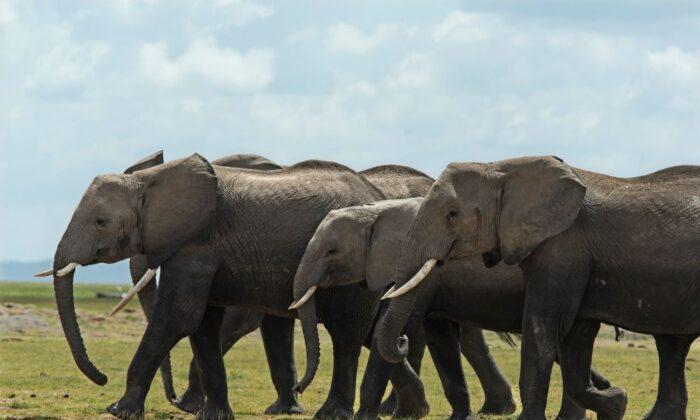African elephants use their unique sense of smell to communicate, distinguish their mates and outsiders, and maintain social cohesion.
These are the findings of a group of researchers from the University of Queensland, who found that smell was used to distinguish characteristics including age, health, reproductive status, location, identity, social status and family relationships between elephants.
Female elephants, in particular, can also use scent for mediation of female competition, cooperation and to facilitate maternal behaviour. They can also monitor the location of up to 30 conspecifics from odour profiles in urine.

Scents Help Elephants Identify Friend From Foe
Elephants are able to use scent to monitor other pachyderms both within and outside their herd. According to the research, this is due to the cross-infection of bacteria arising through frequent physical contact and all overmarking within groups.“Bacteria are proposed to play a significant role in the composition of mammalian odour signals, as found in host urine, faeces or in products from specialised sebaceous or apocrine scent glands; bacteria are suggested to encode information about the sex, age, breeding condition, health, diet, dominance rank and social relationships of their host,” the paper said.
Hoffman noted that elephants greet each other by squealing and flapping their ears, which allows them to push their pheromones towards each other as a sign of recognition.
When female elephants and their offspring meet one another, elephants perform an “elaborate greeting ceremony,” in which elephants “rub their bodies against one another, trumpet, rumble, entwine their trunks, click tusks, elite temporal gland secretions, and release urine and dung profusely, while fanning their uplifted ears and spinning their bodies,” the research found.
Hoffman added that elephants not only distinguish smells quickly but also memorise them.
He pointed to an example in which some elephants bred in captivity were taught to take a tourist’s hat and smell it.
“When the tourist came back hours later, the elephant would be able to immediately identify who the hat belonged to,” he said.
Further, through training, elephants were able to sense many things, including blood and explosives.
“These findings show elephants are complex creatures, and sound is not their only form of communication,” Hoffman added.
“We see humans as the apex, but we now know elephants are one of many animals that have senses more finely attuned than ours.
“There is a lot we can learn from the elephant.”
The study, titled “A pachyderm perfume: odour encodes identity and group membership in African elephants,” was published in Scientific Reports in October 2022.




